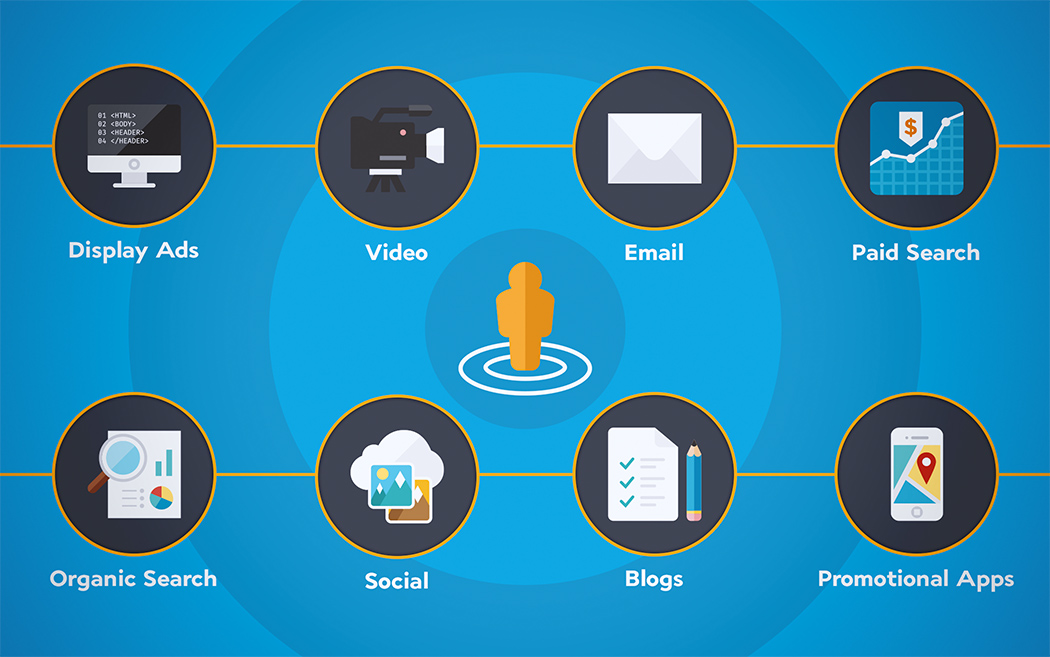In marketing, attribution is a method of identifying a user’s action that contributes in some manner to a desired result (for example, selling) and then assigning a value to each of these actions. Marketing Attribution offers an understanding of what set of events influence users to act in a desired (buying) behavior. This desired behavior is normally referred to as a conversion.
Modern day advertising has changed a lot with the advent of new channels and platforms. Digital frontier of advertising requires marketers to adopt new ways of gauging and measuring their audience’s buying behavior, especially the factors influencing the buying behavior. Digital attribution is a set of variables devised by advertisers to analyze their online customer’s buying behavior and factors influencing the buying behavior. These variables may include, but not limited to: advertising channels, devices, ad-views, click through, conversion etc.
Why do we need a digital attribution model?
According to a report by Adroll, modern day advertisers are running ad campaigns across a wide range of channels, platforms, and devices, but around 58% of them still use a single-touch attribution models (i.e., first/last click). Moreover, only 54% of marketers have an attribution system in place at all.
Interested in Digital Marketing?
From analysis to strategy to implementation, our team has worked with the biggest brands around. Tell us about your campaign.
Note: The single-touch attribution model will only record the first click (on advertisement) and last click (to checkout).
With multiple interactions taking place across a wide range of mobile and desktop devices, it is increasingly difficult to track these actions across devices with a single-touch attribution model.
As marketing teams utilize multiple channels to drive sales, most of the marketers still employ single-touch attribution models. These nearly outdated models aren’t up to the task of tracking which campaigns have the biggest impact on performance and which channels or tactics deserve credit for each conversion.
Consider this example, a potential customer is looking for a treadmill, he saw your ad on a social media platform on his mobile, but he doesn’t click through. Later on, he saw your ad during an online search and click through to your website where he learns more about your product, but doesn’t complete the buying cycle. Later that night, while using his tablet he saw your ad on his favorite social media app and this time he completes the buying cycle. Now the question is, how does a marketer build an attribution model that truthfully tracks the impact each platform had in influencing this person to become a customer?
Approaching a digital attribution model
Different schools of thoughts answer the above question differently. Some gauge success across individual platforms to get a better grip of the impact of search, display ads, and email have on the business.
Others track by device, looking at performance on mobile, desktop, and tablets. Businesses with both brick and mortar locations and an online presence often want to measure attribution across offline and online channels.
Wrap Up
According to the Adroll report, when asked which attribution model best represented their interests, the number one response from the marketers was a first-click model. A linear model that offered equal weight across all the touch-points in the buy cycle, acquired the second position. However, with the growing trend of online shopping via mobile devices, we may see a change in that very soon. A multi-touch digital attribution model is the most effective way to measure the impact of each channel.
 Web Applications
Build web apps using cutting-edge technology
Web Applications
Build web apps using cutting-edge technology
 Business Intelligence Apps
Empower your business with fast & actionable BI Apps
Business Intelligence Apps
Empower your business with fast & actionable BI Apps
 Mobile Applications
Build cross-platform apps for iOS and Android devices
Mobile Applications
Build cross-platform apps for iOS and Android devices
 Internet of Things Apps
Streamline your operations with cloud-based IoT apps
Internet of Things Apps
Streamline your operations with cloud-based IoT apps
 AI Products
Unlock the power of AI & ML with our expertise
AI Products
Unlock the power of AI & ML with our expertise
 Minimum Viable Product (MVP)
Mitigate risks & accelerate your project development
Minimum Viable Product (MVP)
Mitigate risks & accelerate your project development
 Enterprise Software
Build custom enterprise solutions for your business
Enterprise Software
Build custom enterprise solutions for your business
 Software as a Service (SaaS)
Scale your business with ease and cost-efficiency
Software as a Service (SaaS)
Scale your business with ease and cost-efficiency



